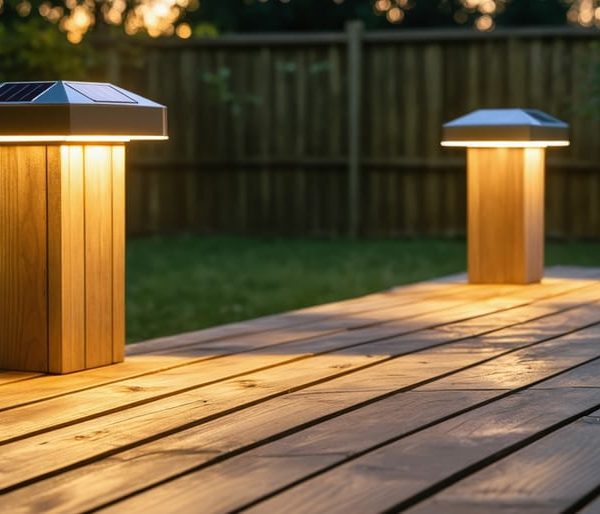6kW Solar System: The Perfect Size for Your Home’s Energy Needs?
A 6kW solar system powers the average American home with clean, renewable energy while cutting electricity bills by 50-90%. This mid-sized solar installation, featuring 20-24 panels across roughly 400 square feet of roof space, generates approximately 24-30 kilowatt-hours (kWh) of electricity daily – enough to run essential appliances, HVAC systems, and modern electronics for a family of four.
Perfect for homeowners consuming 600-900 kWh monthly, a 6kW system strikes the sweet spot between upfront investment and long-term savings. While costs typically range from $15,000-$18,000 before incentives, federal tax credits and state rebates can reduce this investment by 30% or more, making it an increasingly attractive option for energy-conscious households.
Think of a 6kW system as your personal power plant: it harnesses sunshine to generate roughly 9,000 kWh annually, equivalent to planting 150 trees or taking two cars off the road. Whether you’re looking to slash utility bills, increase home value, or reduce your carbon footprint, this system size offers the ideal balance of power, performance, and practicality for most single-family homes.
What Exactly Is a 6kW Solar System?
Key Components
A 6kW solar system consists of several essential components working together to generate and deliver clean energy to your home. The heart of the system typically includes 16-20 solar panels, with each panel producing around 300-375 watts of power. These panels are made of photovoltaic cells that convert sunlight into electricity.
The system’s inverter plays a crucial role by converting the DC power generated by your panels into AC power that your home can use. You’ll typically need a 6kW inverter or multiple micro-inverters attached to individual panels, depending on your setup preference.
Mounting equipment secures your panels to your roof or ground-mounted structure. This includes rails, clamps, and brackets designed to withstand local weather conditions. The racking system ensures proper panel orientation for maximum sun exposure.
Other vital components include:
– Solar cables and connectors
– A monitoring system to track performance
– Circuit breakers and safety switches
– Metering equipment for tracking energy production
– Battery storage (optional) for storing excess power
These components work together seamlessly to create a reliable renewable energy system for your home.

Space Requirements
A 6kW solar system typically requires between 350 to 400 square feet of roof space, depending on the type and efficiency of solar panels used. This translates to approximately 20-24 standard-sized panels, which should be arranged in a way that maximizes sun exposure throughout the day. Before installation, it’s important to consider factors like roof orientation, angle, and shading from nearby structures or trees.
Your roof should be in good condition and structurally sound to support the weight of the system, which averages around 800-1000 pounds when fully installed. South-facing roof sections are ideal in the Northern Hemisphere, though southeast and southwest orientations can also work well. Be sure to account for setback requirements from roof edges and maintain proper spacing between panels for maintenance access.
When planning your installation, it’s essential to be aware of common solar installation challenges such as roof obstructions, vents, or chimneys that might affect panel placement. Working with a qualified solar installer will help ensure optimal panel arrangement while meeting local building codes and safety requirements.

Power Output and Energy Production
Daily Energy Production
A 6kW solar system typically produces between 24-30 kilowatt-hours (kWh) of electricity per day, though this output can vary significantly based on several factors. Your geographical location plays a crucial role, with sunny regions like California or Arizona achieving higher production rates compared to areas with less direct sunlight.
Weather conditions dramatically influence daily energy generation. While solar panels work even on cloudy days, they’re most efficient under clear, sunny skies. Seasonal changes also affect production – expect peak performance during summer months with longer daylight hours and reduced output during winter.
The positioning of your panels is equally important. South-facing installations (in the Northern Hemisphere) typically yield optimal results, with panels tilted at an angle matching your latitude. Clean panels perform better, and regular maintenance ensures consistent output. As with all solar installations, solar panel performance over time gradually decreases, with most quality panels maintaining about 80% efficiency after 25 years.
To maximize daily production, consider installing a solar tracking system, which can increase energy generation by up to 25% by following the sun’s movement throughout the day. Modern monitoring systems help you track real-time production and identify any performance issues quickly, ensuring your system consistently meets your energy needs.
Seasonal Variations
A 6kW solar system’s output naturally fluctuates throughout the year due to changing seasons and weather patterns. During summer months, when days are longer and sunlight is more intense, your system will typically generate its maximum power – often producing 24-30 kWh per day in optimal conditions. This peak performance usually occurs between 10 AM and 2 PM.
Winter brings shorter days and less direct sunlight, which can reduce your system’s output by 30-40% compared to summer production. You might see daily generation drop to 15-20 kWh during these months. Cloud cover and snow accumulation can further impact performance, though modern panels are designed to shed snow efficiently.
Spring and fall serve as transition periods, with moderate production levels averaging 20-25 kWh per day. These seasons often provide consistent energy generation due to mild temperatures, which actually help solar panels operate more efficiently than during extreme summer heat.
To maximize year-round benefits, installers typically angle your panels to optimize annual production based on your location. Some homeowners opt for adjustable mounting systems that allow for seasonal tilt adjustments, though fixed installations are more common and still provide excellent results throughout the year.
Remember that while seasonal variations are normal, your annual energy production will balance out to meet your expected needs when properly designed.

Is a 6kW System Right for Your Home?
Energy Consumption Match
To determine if a 6kW solar system is right for your home, start by calculating your average daily energy consumption. Review your electricity bills from the past year and look for your daily kilowatt-hour (kWh) usage. Most households consuming between 16-24 kWh per day will find a 6kW system suitable for their needs.
A 6kW system typically generates 20-25 kWh per day, depending on your location and sun exposure. To match this system size to your needs, consider your peak usage times and seasonal variations. Summer months often require more energy for cooling, while winter might see increased usage for heating and lighting.
For the best match, factor in your future energy plans. Are you considering an electric vehicle or planning to add major appliances? A 6kW system offers room for moderate growth in energy consumption while maintaining efficient production levels.
Keep in mind that energy-saving habits and efficient appliances can help maximize your system’s effectiveness. Consider conducting an energy audit to identify areas where you can reduce consumption before finalizing your system size.
Cost Considerations
The cost of a 6kW solar system typically ranges from $15,000 to $25,000 before incentives and tax credits, though prices can vary significantly based on your location and specific installation requirements. This investment covers solar panels, inverters, mounting hardware, and professional installation. For those interested in understanding solar energy savings, federal tax credits can reduce the initial cost by up to 30%, with additional state and local incentives potentially lowering it further.
Maintenance costs are relatively minimal, typically averaging $150-300 per year for routine check-ups and cleaning. Most quality solar panels come with 25-year warranties, and inverters usually carry 10-15 year guarantees. While the upfront cost might seem substantial, many homeowners find their system pays for itself within 5-8 years through reduced electricity bills and incentive programs. Financing options, including solar loans and lease agreements, can help make the initial investment more manageable, with monthly payments often lower than current utility bills.
Installation and Maintenance
Installing a 6kW solar system typically takes 2-3 days with a professional team. The process begins with a thorough site assessment to determine optimal panel placement and structural requirements. Your roof should be in good condition and able to support the weight of approximately 15-20 solar panels. While DIY installation might seem tempting, professional installation ensures safety and proper system performance.
The installation process involves mounting the rails, installing the panels, connecting the inverter, and setting up the monitoring system. Choosing reliable solar equipment from reputable manufacturers is crucial for long-term system performance and warranty protection.
Maintenance is relatively straightforward, making these systems popular among homeowners. Regular cleaning of panels (usually 2-4 times per year) helps maintain optimal efficiency. In most climates, rain naturally helps keep panels clean, but additional cleaning may be necessary in dusty areas or during dry seasons.
Key maintenance tasks include:
– Visual inspections for damage or debris
– Checking electrical connections
– Monitoring system performance through your inverter display
– Professional inspection every 2-3 years
– Trimming nearby trees to prevent shading
Modern solar panels are built to last 25-30 years with minimal maintenance. The inverter might need replacement after 10-15 years, which should be factored into your long-term maintenance plan. Most issues can be detected early through regular monitoring of your system’s output, helping prevent significant problems and ensuring consistent energy production.
A 6kW solar system represents an excellent middle-ground solution for many homeowners looking to embrace renewable energy. As we’ve explored, this system size typically generates between 20-24 kWh per day, making it suitable for average-sized households with moderate energy consumption. The investment, while significant upfront, offers substantial long-term savings through reduced electricity bills and potential government incentives.
Before making your decision, take time to assess your household’s energy needs, roof space, and local climate conditions. Consider scheduling a professional solar assessment to ensure a 6kW system aligns with your specific requirements. Remember that factors like panel efficiency, installation quality, and proper maintenance all play crucial roles in maximizing your system’s performance.
Taking the step towards solar energy isn’t just about saving money – it’s about contributing to a sustainable future. Whether you’re ready to move forward with installation or need more information, connecting with certified solar installers in your area can help you make an informed decision. With proper planning and implementation, a 6kW solar system can provide reliable, clean energy for your home for decades to come.











